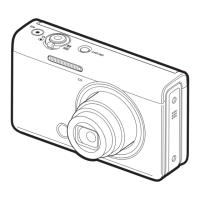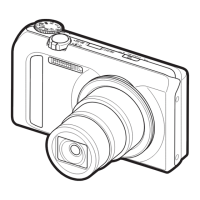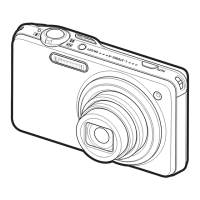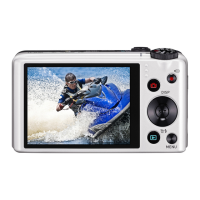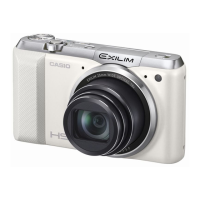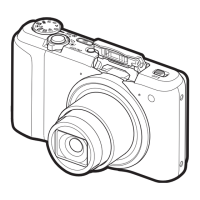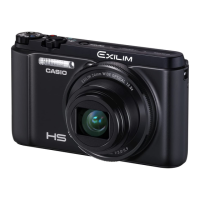101
Using BEST SHOT
6. Press the shutter button the rest of the way
down and slowly move the camera in
accordance with the instructions and arrow that
appear on the monitor screen.
• Holding the camera firmly with both hands, follow
the instructions that appear on the monitor screen to
slowly slide the camera horizontally or vertically at a
constant speed in an arc centered on your body.
– When sliding the camera horizontally, do not allow
your body to move left or right. A vertical line
running through your body should serve as the
axis.
– When sliding the camera vertically, do not allow your body to move upwards
or downwards. A horizontal line between your shoulders should serve as the
axis.
– Take care not to slide the camera diagonally and be sure to maintain a firm
grip on it.
• The camera will start composing the super-wide image internally when the
slide cursor reached the other end of the movement range.
• Image composing also will start automatically if you stop moving the camera
during super-wide shooting.
• The “11 mm” and “14 mm” angle of view values are approximate and are provided
for reference only. Actual angle of view values are not guaranteed.
• Zoom operations are not supported during Wide Shot shooting. The zoom setting
is fixed at full wide angle.
• This function makes it possible to shoot images with a maximum angle of view of
11 mm or 14 mm. Note, however, that shooting conditions can result in a smaller
angle of view.
• The following conditions are not compatible with Wide Shot shooting.
– Subject whose brightness is very different from that of its surroundings due to
artificial light, sunlight, etc.
– Rivers, waves, waterfalls, or other subject with constantly changing patterns
– Sky, beach, or other subject with continuous patterns
– Camera too close to the main subject
– Moving subject
– Panning upwards on a skyscraper or some other very tall structure or object
– Dark surroundings
• Any of the following can cause Wide Shot operation to stop part way through.
– Subject or camera movement
– Camera movement that is too fast or too slow
– Camera movement outside of the required route
– Camera movement in the wrong direction
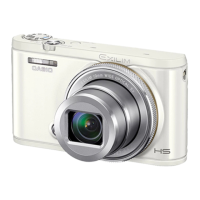
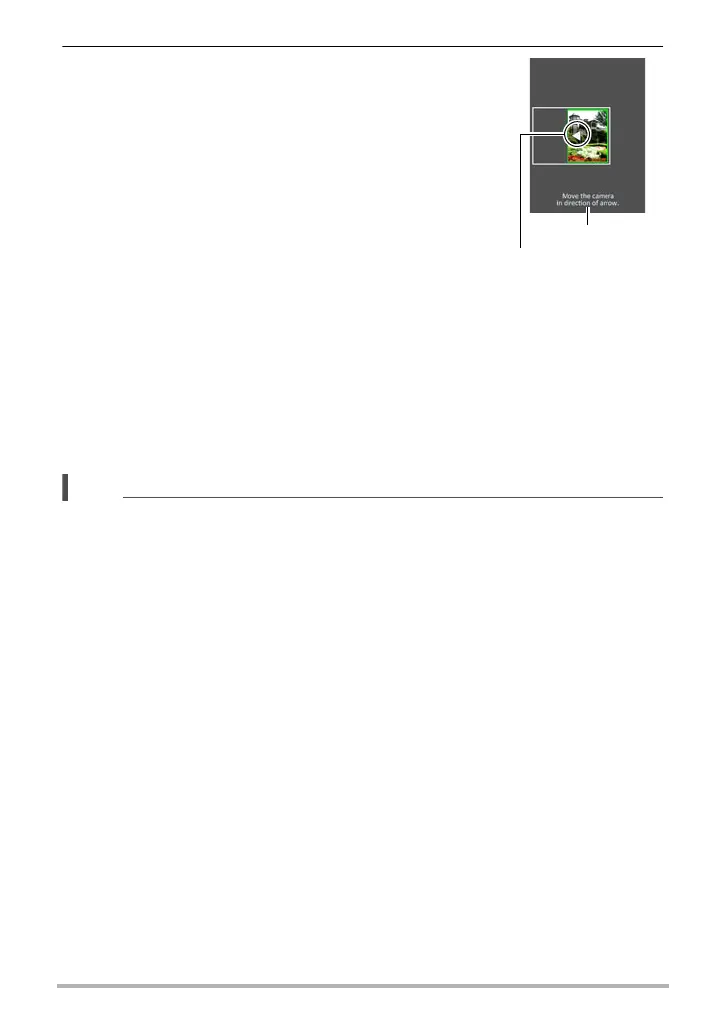